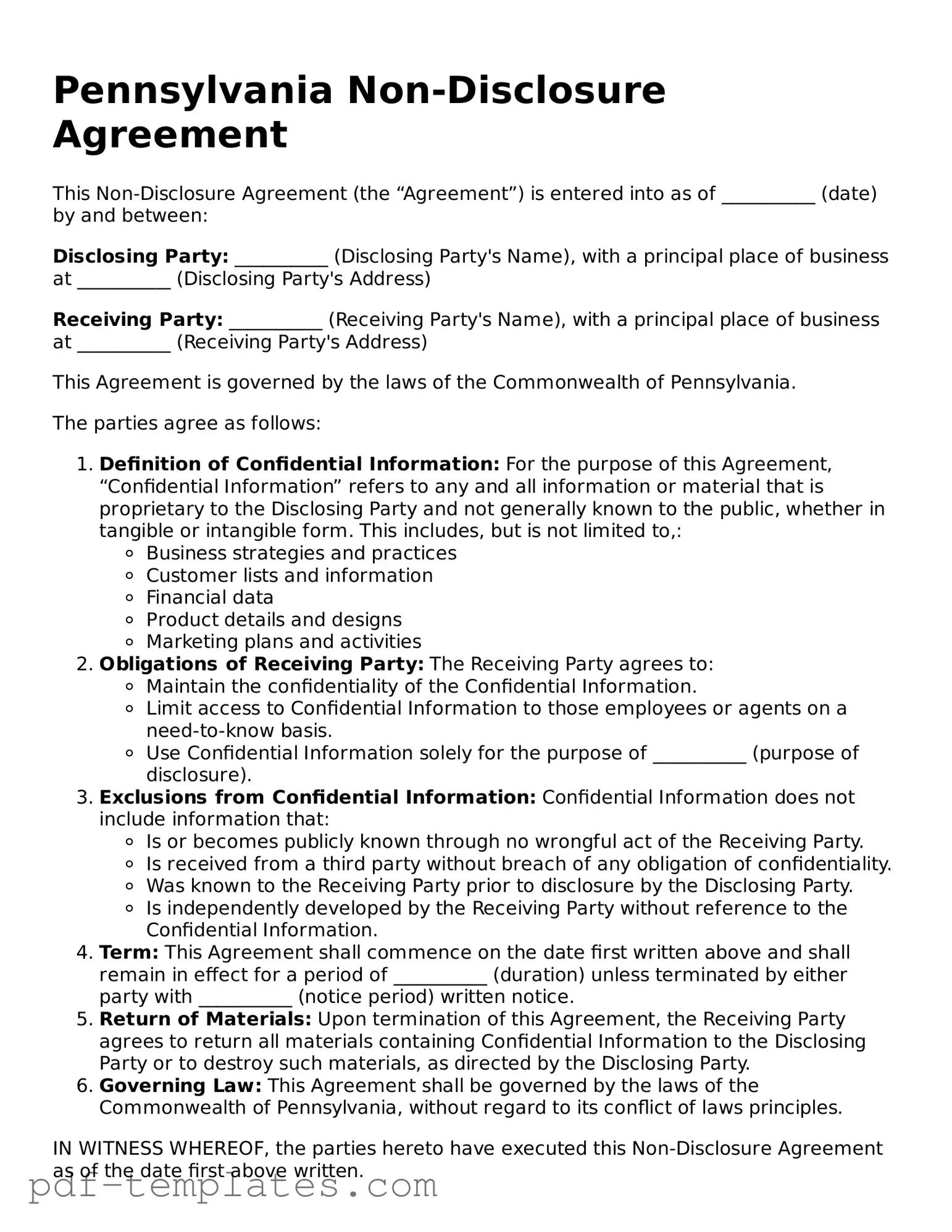The Pennsylvania Non-disclosure Agreement (NDA) form serves as a crucial tool for individuals and businesses seeking to protect sensitive information from unauthorized disclosure. This legal document outlines the obligations of the parties involved, ensuring that confidential information remains secure. Key components of the NDA include definitions of what constitutes confidential information, the duration of confidentiality obligations, and the specific uses permitted for the disclosed information. Additionally, the agreement typically addresses the consequences of breach, providing a framework for legal recourse should the terms be violated. By clearly establishing the expectations and responsibilities of each party, the Pennsylvania NDA fosters trust and collaboration while safeguarding proprietary information. This form is essential for various situations, including business partnerships, employment relationships, and joint ventures, where the exchange of confidential data is necessary for success.
